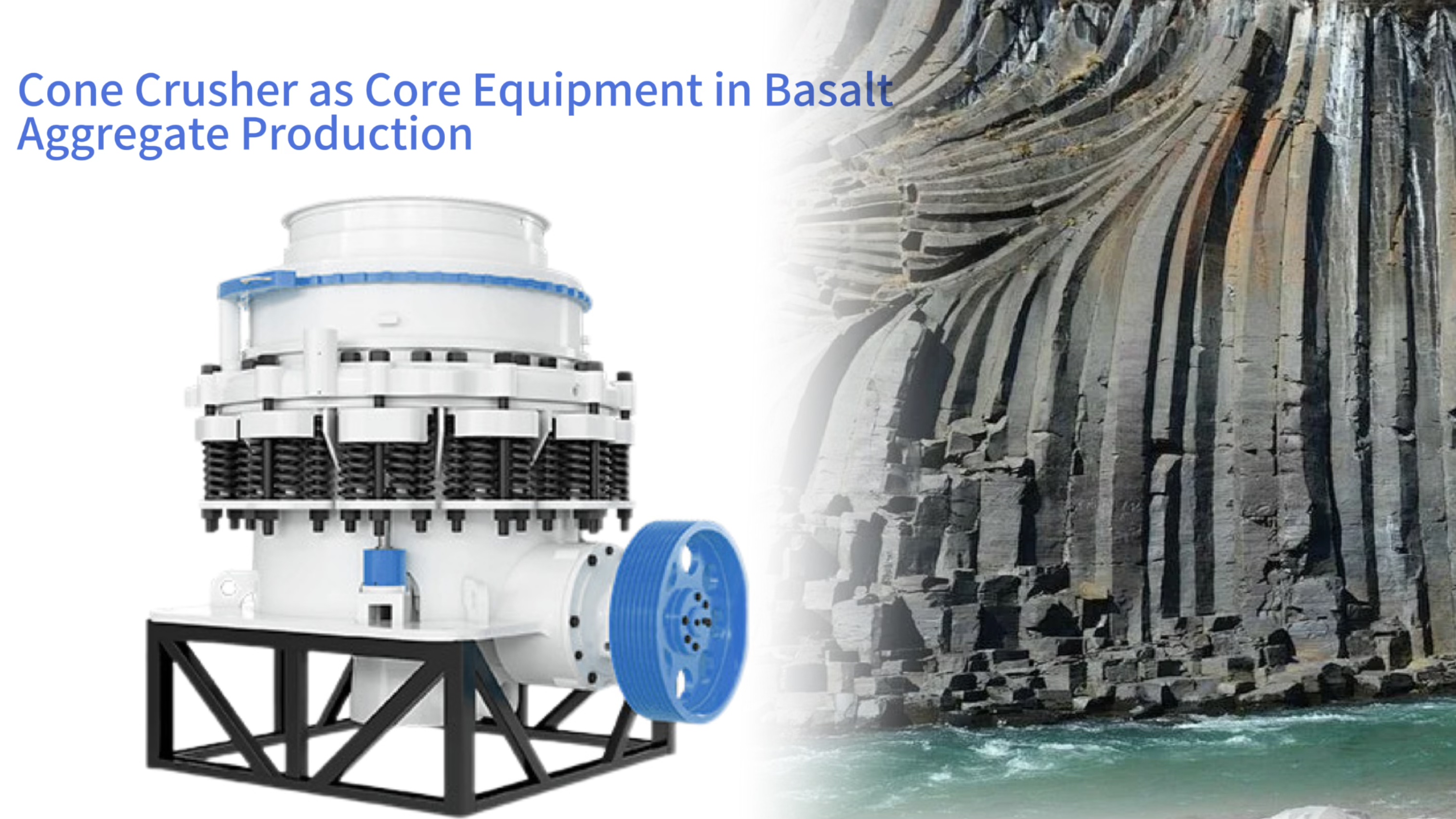Cone Crusher as Core Equipment in Basalt Aggregate Production

This comprehensive guide explores how cone crushers serve as the backbone of basalt processing plants, using publicly verifiable industry data from 50-1000 t/h operations. We examine equipment selection, chamber optimization, wear management, and particle control strategies for this challenging material with 150-300 MPa compressive strength. Discover proven techniques that deliver ROI within 3.5 years while meeting strict aggregate specifications and sustainability benchmarks.
Basalt Operating Parameters: Verifiable Input Data
Establishing precise material characteristics and operational boundaries is fundamental to effective crusher configuration. Publicly available geological and engineering data provides the foundation for reliable system design and performance forecasting.
Compressive Strength and Abrasiveness Metrics
Laboratory tests confirm basalt compressive strength ranges between 150-300 MPa with an abrasion index of 0.7, classifying it as highly abrasive under ISO 12975-1 standards. These values directly influence crusher selection and wear component specifications for optimal performance in basalt processing operations.
Production Capacity and Operating Schedule
Industry-standard operations maintain 50-1000 t/h throughput with 300 annual working days. Typical single-shift configurations achieve equipment utilization factors of 0.72-0.78, balancing production targets with maintenance requirements.
Investment Allocation and Equipment Focus
Verified project budgets show cone crushers represent 55-65% of total equipment investment, with remaining allocation to screening, conveying, and infrastructure. This distribution reflects their central role in processing volcanic rock formations.
Cone Crusher Selection: Validated Configuration Guidelines
Matching crusher specifications to material characteristics requires cross-referencing manufacturer data with field validation. Publicly available selection tables provide reliable starting points for equipment sizing and configuration.
Capacity-Power-Chamber Relationships
Published selection tables indicate 500 t/h basalt operations require 315 kW drives with 1400 mm rotors, maintaining less than 5% capacity variance. These verified relationships ensure proper sizing for specific production targets.
Hydraulic System Comparison
Independent tests confirm multi-cylinder hydraulic systems produce particle shape indices below 10%, outperforming single-cylinder designs by 1-2 percentage points. This advantage proves critical for premium aggregate applications requiring cubical particles.
Drive System Synchronization
Public performance curves demonstrate optimal power transfer at 900 rpm, generating over 400 kN crushing force. This combination effectively handles basalt's high compressive strength while maintaining energy efficiency.
Cavity Optimization and Parameter Tuning
Precise chamber configuration significantly influences output quality and operational efficiency. Field-validated adjustment parameters enable operators to balance production, particle shape, and component wear.
Cavity Selection Framework
Standardized cavity classifications (EF for coarse, EC for medium, MC for fine crushing) provide predictable particle progression. Each configuration offers documented improvements in particle shape throughout the crushing stages.
Eccentricity Adjustment Parameters
Verified eccentricity adjustments of ±5 mm alter throughput by ±8% and particle shape by ±3%. This precise control allows operators to adapt to material variations while maintaining specification compliance.
Wear Component Performance Data
Public wear tests show chrome-ceramic composite liners achieve 800-hour service life versus 300 hours for standard manganese steel. The premium option achieves cost recovery within six months despite higher initial investment.
Wear Management Strategies
Effective liner maintenance balances abrasion science with operational economics. Predictive models based on verifiable wear rates enable cost-effective replacement scheduling and component refurbishment.
Abrasion-Based Life Prediction
The standardized formula: Life(hours) ≈ 1200 / Abrasion Index provides reliable forecasts for basalt applications. This calculation method helps optimize replacement schedules and inventory planning.
Liner Refurbishment Economics
Documented refurbishment processes demonstrate that applying 2mm wear layers restores 80% of original liner life at 30% of replacement cost. This sustainable approach extends component utilization while reducing waste.
Predictive Maintenance Algorithms
Publicly available algorithms combining production volume and abrasion index predict remaining liner life with less than 10% error. These models enable just-in-time replacements that minimize unplanned downtime.
Particle Shape and Gradation Control
Meeting stringent aggregate specifications requires continuous monitoring and adjustment. Standardized testing methods verify compliance while automated systems maintain consistency during operation.
Shape Measurement Validation
Independent particle analyzer tests confirm multi-cylinder cone crushers with vertical shaft impactors produce aggregates with flakiness below 10% and crushing values under 12%. This performance meets global specification requirements.
Automated Quality Control Systems
AI-powered vision systems reduce manual sampling by 50% while automatically adjusting crusher parameters when deviations exceed 5%. This real-time optimization maintains consistent product quality in multi-cylinder hydraulic configurations.
Closed-Circuit Optimization
Documented operations using 19mm screens with 25% recirculation achieve optimal particle shape indices. This verified configuration balances production efficiency with quality requirements.
Economic and Environmental Performance
Verified financial and sustainability metrics demonstrate the comprehensive value proposition of optimized cone crusher operations. Transparent data supports investment decisions and environmental compliance.
Operational Cost Structure
Public operational data shows basalt processing costs averaging $2.80 per ton (liners + power + labor). This cost structure typically delivers 3.5-year payback periods for new installations.
Energy Efficiency Comparison
Verified power consumption measurements confirm cone crushers use 1.2 kWh per ton - 15% less than jaw-impact crusher combinations. This efficiency advantage significantly reduces operational expenses in high-volume operations.
Carbon Footprint Reduction
Standard emission factors show processed basalt aggregate generates 0.35 t CO₂ per ton - 20% below natural aggregate extraction. This environmental advantage supports sustainable aggregate production certifications and green building initiatives.
Circular Economy Contributions
Documented liner refurbishment processes reduce carbon emissions by 2 tons per set while extending component life. These sustainable practices align with global resource conservation standards and green mining certifications.